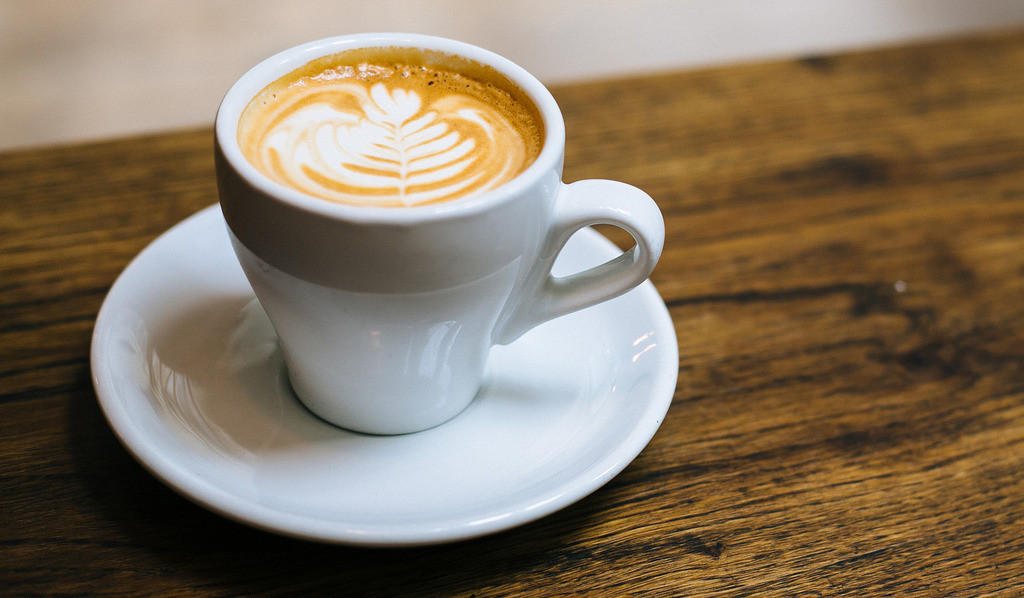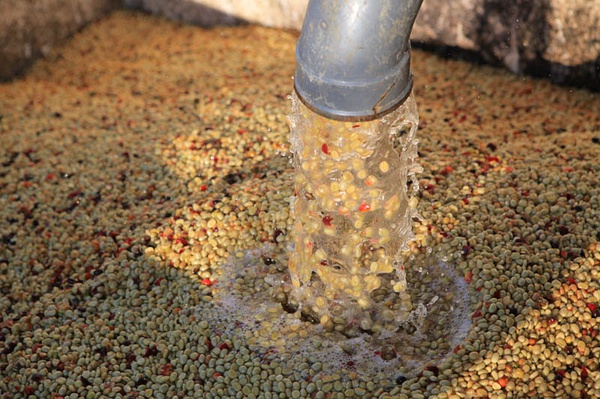If you like coffee, you have to read cappuccino.
When it comes to coffee, 99% of your friends probably think of cappuccino. Fragrant milk foam, smooth taste, cappuccino brings us a beautiful imagination of coffee. But it's not easy to get a really good cappuccino.
Let you really know the cappuccino.
Cappuccino is an Italian coffee mixed with the same amount of Italian espresso and steamed milk. I only love cappuccino, not only because of its rich taste, but also because of its delicacy and beauty.
The traditional cappuccino is 1/3 espresso, 1/3 steamed milk and 1/3 foamed milk. The full-bodied taste of espresso, accompanied by lubricated foam; it has a hint of essence and dew. Foamed milk sprinkled with cinnamon powder and the aroma of Italian coffee from the bottom up. At first, it smells good, the first sip, you can feel the sweetness and softness of a large number of milk bubbles, the second mouthful can really taste the original flavor of coffee beans, and finally when the taste stays in the mouth, you will feel that one more mellow and meaningful, a kind of coffee can drink a variety of different unique flavor, this is the magic of cappuccino.
First of all, evaluate a cappuccino from the appearance (all in terms of dry cappuccino, because wet cappuccino is basically the way to make a latte)
1. The exquisite degree of milk foam. Qualified milk bubbles are not obvious bubbles, what can be seen on the surface should be a delicate and bright layer of milk bubbles, which can reflect light, a bit like cream, and is particularly fine.
2. The clarity of the gold circle or flower drawing. The real qualified cappuccino should show that there is a clear boundary between white milk and brown coffee, it should not be turbid, and the lines of the flowers are clear and symmetrical. This is a test of whether a barista can pull flowers at home.
3. The thickness of milk foam. A good cappuccino foam should be one centimeter. Only in this way can you make sure that the entrance of the coffee is silky and the mouth is full of milk bubbles.
Understand the cappuccino from the taste
1. Temperature. A normal cup of cappuccino should ensure that guests can gulp it down, so that guests can feel the smoothness of Grandma Niu's soak and the perfect combination of milk sweetness and full-bodied coffee. Therefore, the temperature of milk should be controlled at about 65c.
2. Smoothness, which is the most wonderful feature of cappuccino. Unfortunately, for the sake of economic benefits, many businesses do not use high-quality milk, or even do not pay attention to get rid of milk foam, so the cappuccino can not let guests feel its own beauty. The temperature of a normal cup of cappuccino ensures that guests can drink it. This temperature can make you feel warm without burning your mouth, and ensure the duration of the foam, while the thickness and fineness of the foam ensure the taste. Just imagine, it only takes about 10 seconds to refrigerate milk from 4c~5c to 65c. Baristas need to complete the two processes of pouring the right amount of steam into the milk and beating the steam milk in this short time. The former ensures the thickness of the milk bubbles and the latter ensures the delicate degree of the milk bubbles, and it can not make the milk bubbles temperature too high. In fact, it can examine the basic skills of the baristas.
3. The flavor level of coffee, milk and milk foam. In fact, it is not easy to achieve a clear and perfect blend of flavors. a good cappuccino, as mentioned above, you can feel the smoothness and delicacy of milk foam, the sweetness and mellowness of milk, and, of course, the unique charm of espresso. If you want to make the taste rich, every step of the operation must be careless, you must ensure the freshness of coffee beans and milk, and proper espresso extraction. If there is no guarantee for the thickness and fineness of the foam, the taste will be greatly reduced.
These criteria are to evaluate a barista's basic skills and attentiveness to coffee production from the side. A good cup of coffee should be a work of art made by a good barista rather than a quick drink to fool things.
The origin of the name cappuccino
At the beginning of the 20th century, when the Italian Azibucha invented the steam pressure coffee machine, he also developed cappuccino coffee.
Cappuccino coffee is a variation of Italian coffee, that is, strong coffee is poured with steamed milk, and the color of the coffee is like the headscarf on the dark brown coat of cappuccino monks, hence the name caffeine. It turned out that the monks of the St. Franciscan Church, founded after 1525, were all dressed in brown robes and a pointed hat. When the St. Franciscan Church was spread to Italy, the local people thought that the monks' clothes were very special, so they gave them the name Cappuccino. People found that when espresso, milk and milk foam were mixed, the color was like the dark brown robe worn by monks, so they came up with a drink with coffee and sharp bubbles, which was named cappuccino. The word was first used in English in 1948, when a report in San Francisco first introduced cappuccino beverages. It was not until 1990 that it became a familiar coffee drink.

Important Notice :
前街咖啡 FrontStreet Coffee has moved to new addredd:
FrontStreet Coffee Address: 315,Donghua East Road,GuangZhou
Tel:020 38364473
- Prev

Basic introduction and treatment of sixteen kinds of coffee beans in the world
The variety of coffee is also rich and varied, the following is to introduce all kinds of coffee beans from which countries? 1. Rwanda Kivu Rwanda-machine-free Rwanda coffee beans were introduced to Rwanda by German missionaries in the 20th century. Because of Rwanda's superior climate and unique geographical environment, growing coffee beans has a unique fruity and grassy aroma. Rwanda
- Next

Different treatment methods of raw coffee beans are analyzed in detail.
After picking, coffee fruits need to go through a series of processes before they can become what we call coffee raw beans. This series of processes are often referred to as the handling of raw coffee beans or the rough processing of raw coffee beans in the industry. How do coffee beans get coffee there is a pair of seeds in the middle of the fruit, which are wrapped in the outer skin, pulp and endocarp. The ripe coffee fruit should stand after picking.
Related
- What is the meaning of lactic acid fermentation with coffee bean treatment?
- How to judge the state of foam by sound?
- How does the latte pull out the unicorn pattern? Come to get for a little trick to improve the flower pull!
- Will flower pulling affect the taste of the latte?
- Do you know the history of coffee?
- The difference between honey treatment and sun washing what is raisin honey treatment?
- What kind of milk can a novice use to make coffee foam to keep the foam longer? The correct method and skills of milking tutorial sharing
- Why do washed coffee beans taste sour? Flavor characteristics of washed Coffee
- Introduction to the skill of how to practice the size and height of water injection around the circle of hand-brewed coffee
- How do beginners practice coffee flower drawing from scratch?

